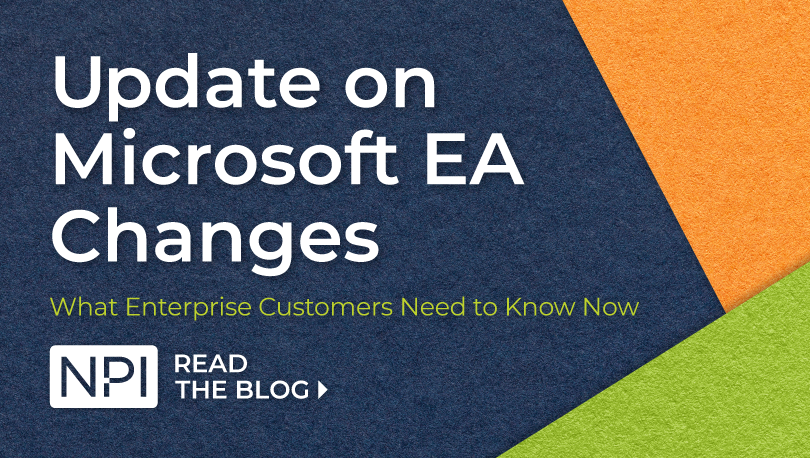BLOG
Update on Microsoft EA Changes: What Enterprise Customers Need to Know Now
This is an update to our recent post on "Microsoft EAs: Are They Going Away?" and reflects what we’ve learned in recent weeks. There are important signals in these changes that will impact not just Level A customers, but also larger Microsoft estates.
Enterprise Agreement Eligibility Changes Impacting Sub-2,400 Seat Organizations
As we reported in our previous blog post on the future of Microsoft Enterprise Agreements, Microsoft is now officially implementing changes to EA eligibility requirements. These changes specifically target customers with fewer than 2,400 seats (Level A). Going forward, these customers must maintain perpetual on-premise licensing within their Enterprise Agreement to either initiate or renew an EA.
If a customer only has Online Subscriptions in their Enterprise Agreement, they will be directed to other licensing programs, namely the Cloud Solution Provider (CSP) Agreement or the Microsoft Customer Agreement for Enterprise (MCA-E) licensing program.
Pricing Comparisons: EA vs. Alternative Programs
From a pure pricing perspective, cloud licensing costs should remain relatively comparable across EA Level A, CSP, and MCA-E agreements. However, our analysis suggests many customers will experience increased overall costs as these alternative agreements typically don't offer the same discount structures available through the traditional EA model.
The Complexity Challenge Microsoft Hasn't Addressed
Perhaps most concerning is the complexity these changes introduce, and an issue Microsoft has yet to adequately address. Neither CSP nor MCA-E programs accommodate on-premise licenses with Software Assurance. This creates a logistical challenge for current EA customers who maintain a consolidated licensing environment.
For organizations with a mix of cloud and on-premise products, transitioning away from an EA would necessitate managing cloud licenses through CSP or MCA-E while simultaneously administering on-premise licenses through separate agreements like MPSA or Open Licensing. This split approach creates unnecessary administrative overhead and potential compliance risks.
Hidden Cost Implications for Cloud Transitions
The Enterprise Agreement currently provides valuable "From SA" part numbers that include a programmatic 15% discount. This is essentially Microsoft's way of rewarding customers for their Software Assurance investment when transitioning to cloud services.
A forced migration from EA to CSP/MCA-E could potentially reclassify established customers as "net new," creating several problematic scenarios:
- Loss of ability to bundle Microsoft Teams with M365
- Requirement to purchase Teams separately
- Higher costs due to fractured licensing requirements for services previously consolidated
Direct Model Expansion for Level D Enterprise Customers
Microsoft appears to be expanding its direct engagement model for Level D customers (15,000+ seats). Under this approach, Microsoft assumes responsibilities traditionally handled by Licensing Solution Providers (LSPs), including contract paperwork, true-ups, reservation reconciliation, and ongoing agreement maintenance.
This change was predictable given the systematic reduction in LSP management fees since Satya Nadella's appointment as CEO. The compensation model has steadily declined, with LSPs currently receiving only 1% on first-year orders and true-ups for Level D customers.
What This Means for Enterprise IT Procurement
For procurement professionals, these changes signal a need for heightened vigilance when approaching Microsoft licensing renewals in 2025. The post-sales support landscape is shifting, with Microsoft's internal teams assuming responsibilities formerly handled by the LSP community.
Whether these changes will ultimately benefit enterprise customers remains to be seen. We'll continue monitoring developments and providing analysis as the situation evolves.
Stay tuned to our blog for continued updates on Microsoft licensing changes and strategies for optimizing your Microsoft Enterprise Agreement.


